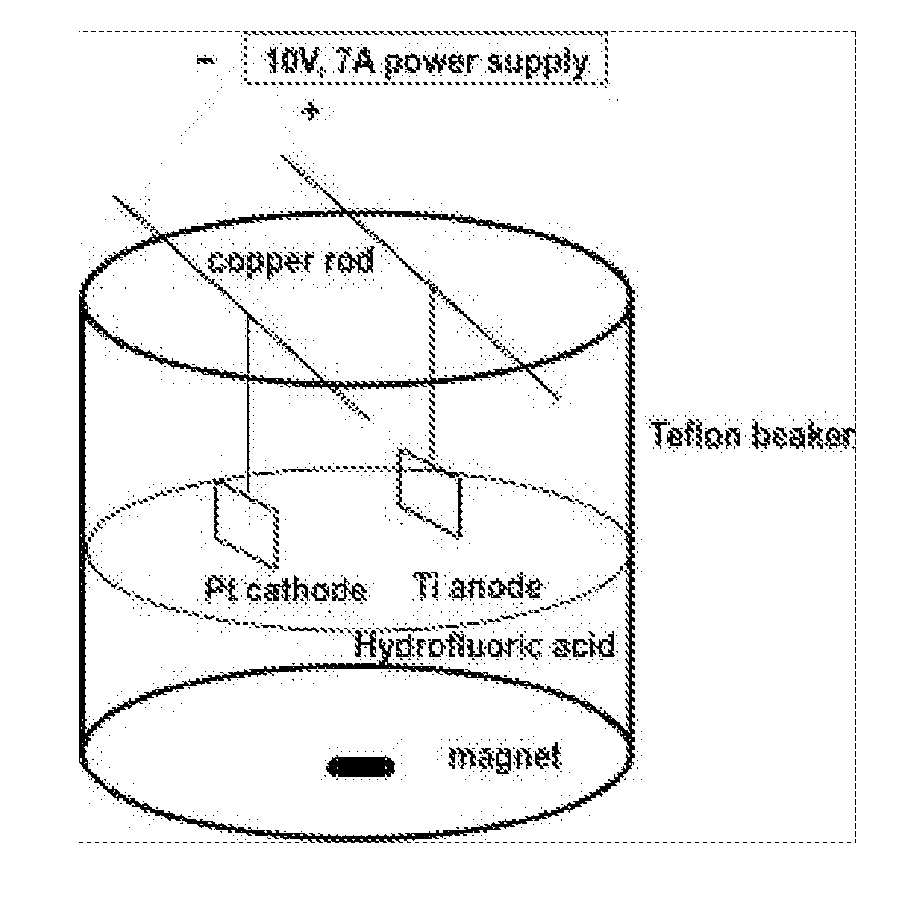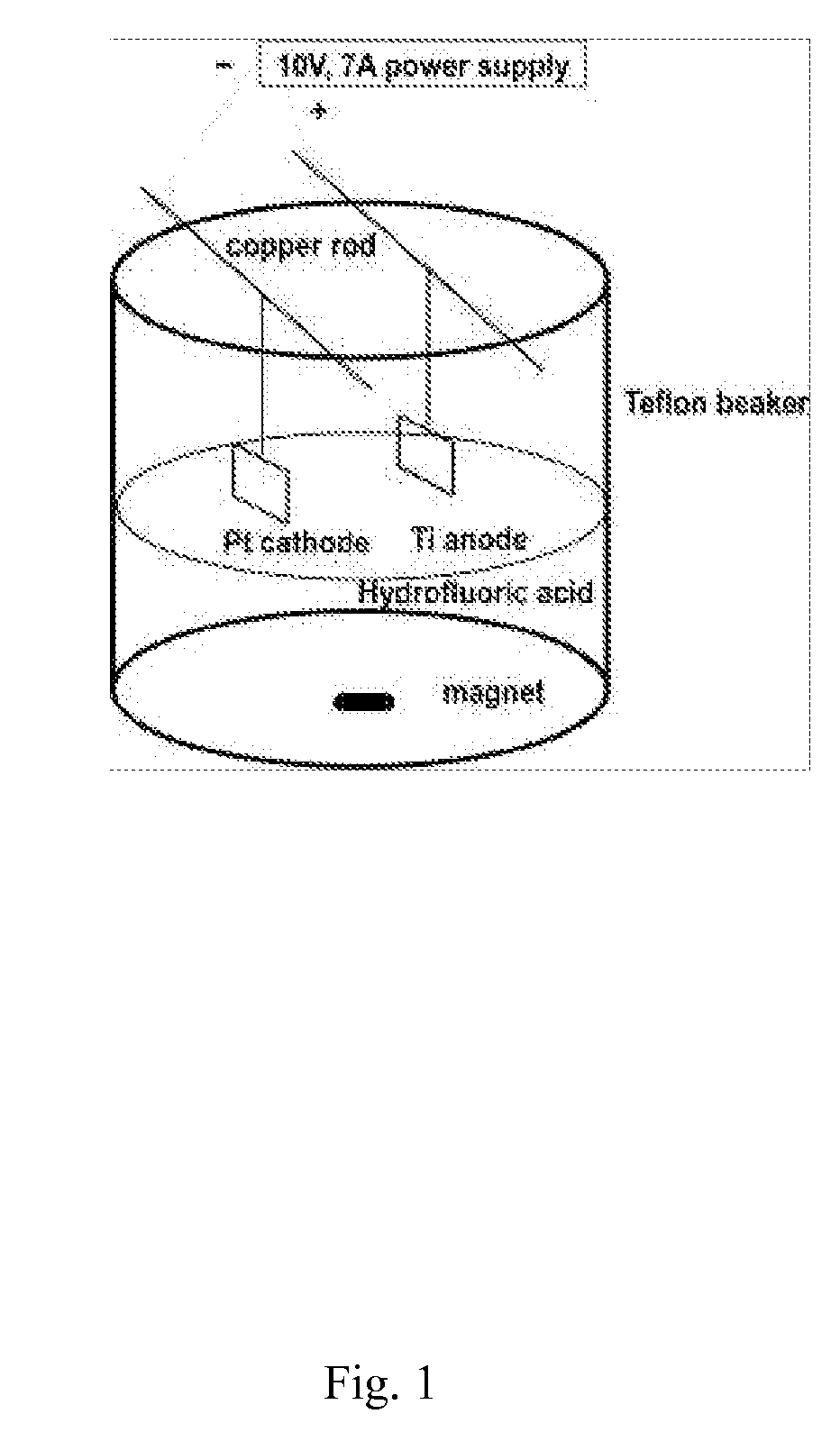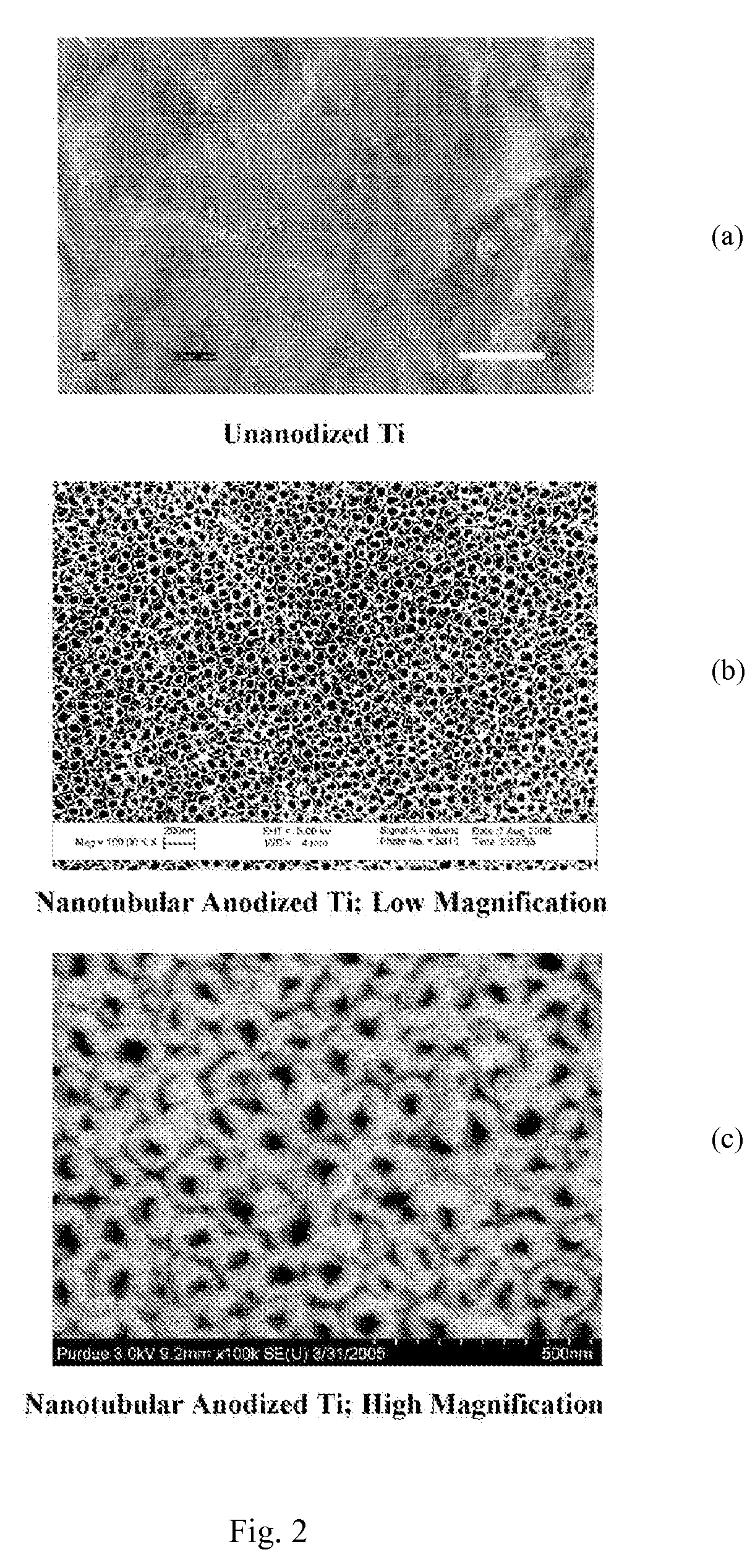Method for producing nanostructures on a surface of a medical implant
a technology of nanostructures and medical implants, applied in the direction of prosthesis, pharmaceutical delivery mechanisms, coatings, etc., can solve the problems achieve the effects of increasing surface roughness, increasing chondrocyte adhesion, and increasing in vivo chondrocyte function
- Summary
- Abstract
- Description
- Claims
- Application Information
AI Technical Summary
Benefits of technology
Problems solved by technology
Method used
Image
Examples
example 1
Drug Physical Adsorption Method
[0068]To assess drug loading, anodized titanium substrates of different surface chemistry were immersed into 1 ml of either a P / S solution (containing 6.25 mg penicillin and 10 mg streptomycin per ml) or a P-G sodium salt (6.25 mg penicillin per ml) for a predetermined time (24 hours) under room temperature in a vacuum oven (−20 inch Hg, equaled to −0.67 atmospheric). Samples were then taken out of the oven, rinsed with enough DI water to remove the excessive drug solutions remaining on the surface. These samples were vacuum dried until used. Some of the samples were imaged by a scanning electron microscope (hereinafter “SEM”) to observe the morphology of the drugs adsorbed onto and into titania nanotube structures. The other samples were used for drug release experiments.
Drug Loading and Release Behavior
[0069]As seen in FIG. 9, after soaking in the P / S or P-G solutions overnight, titanium substrates with different surface chemistry (and, thus, differe...
example 2
Drug Electrodeposition Method
[0072]Another example method used to load drugs into / onto the various titanium substrates evaluated was cathodic electrodeposition. In this method, titanium substrates (or modified titanium substrates as described above, were used as a cathode in an electrochemical cell similar to that of anodization. A 5% penicillin solution in DI water (P / S or P-G) was used as an electrolyte. 0.9 wt. % NaCl was used as a control electrolyte. The applied voltage was constant at 5 volts or 8 volts according to experimental observations. The deposition time was 5 minutes.
[0073]As described above, the anodized titanium with nanotubular structures was used as a cathode in an electrodeposition system to promote drug loading and prolonged drug release from the anodized titanium substrate. Without an applied voltage, it is seen in FIG. 12(a) that close to no drugs were deposited onto the anodized titanium substrates Because the P / S solution contained 0.9% NaCl, an electrolyte ...
example 3
Drug Co-precipitation with Calcium Phosphate Method
[0075]A third example method used to load drug molecules into / onto the various titanium substrates was a co-precipitation method. This method was distinct from Example 1, physical adsorption method and used different post-anodization treatments as denoted in FIG. 14. Specifically, after the cleaning step described above, the anodized titanium samples were soaked in a 6.0 M sodium hydroxide for approximately 1 hour to form sodium titanate on the surface (hereinafter “ASH titanium”). The ASH titanium samples were then removed and placed in a furnace at 500° C. in the air for approximately 2 hours and then were allowed to cool to room temperature in air. Once the ASH titanium samples were prepared they were allowed to soak in 1.5× Simulated Body Fluid (hereinafter “SBF”), containing 11.994 g NaCl, 0.525 g NaHCO3, 0.336 g KCl, 0.342 g K2HPO4.3H2O, 0.458 g MgCl2.6H2O, 0.417 g CaCl2, 0.107 g Na2SO4, and 9.086 g (CH2OH)3CNH2 in 1000 ml dH2...
PUM
| Property | Measurement | Unit |
|---|---|---|
| voltage | aaaaa | aaaaa |
| voltage | aaaaa | aaaaa |
| diameters | aaaaa | aaaaa |
Abstract
Description
Claims
Application Information
 Login to View More
Login to View More - R&D
- Intellectual Property
- Life Sciences
- Materials
- Tech Scout
- Unparalleled Data Quality
- Higher Quality Content
- 60% Fewer Hallucinations
Browse by: Latest US Patents, China's latest patents, Technical Efficacy Thesaurus, Application Domain, Technology Topic, Popular Technical Reports.
© 2025 PatSnap. All rights reserved.Legal|Privacy policy|Modern Slavery Act Transparency Statement|Sitemap|About US| Contact US: help@patsnap.com



